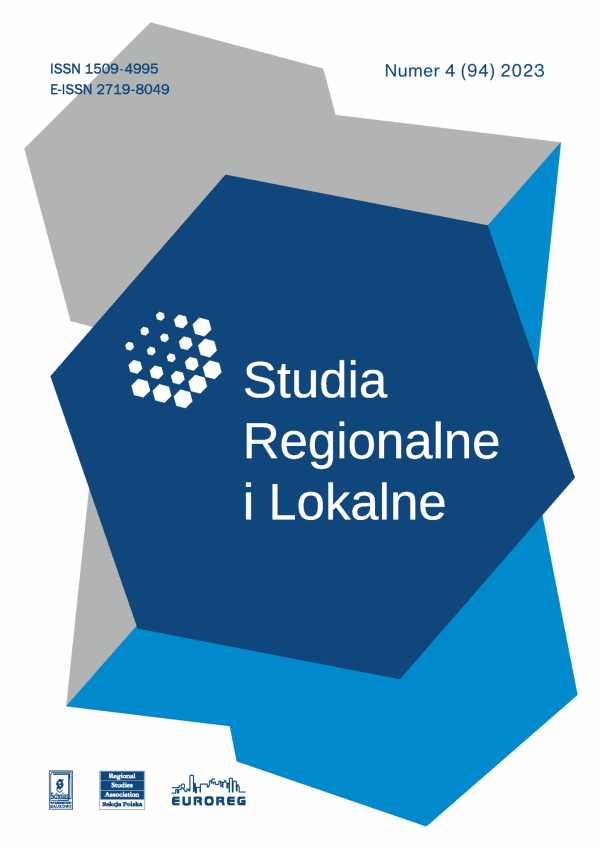Opublikowano w numerze
4(94)/2023

- Christophe Chabrot, Robert PykaThe Metropolis of Lyon: An Example to Follow by the GZM Metropolis?[więcej]
- Dominika Wojtowicz, Anna BaczyńskaThe Spatial Patterns of Sustainable Development at the Local Level[więcej]
- Marta GötzTo Diversify or to Specialise? How to Strike a Balance in a Cluster Profile: A Case Study of the Hamburg Aviation Cluster (HAv), Drawing on Related Variety and Blending Processes[więcej]
- Janina Kotlińska, Anna Mizak, Anna Krawczyk-SawickaTypologizacja polskich regionów w oparciu o wpływ potencjału społeczno-gospodarczego na ich kondycję finansową[więcej]
- Tomasz Kupiec, Dorota Celińska-JanowiczPraktyka ewaluacji interwencji publicznych w miastach na prawach powiatu[więcej]
- Kamil NowakPrzestrzenne zróżnicowanie sytuacji mieszkaniowej w procesie przemian demograficznych[więcej]
- Igor KseniczUpamiętnienia partnerstw zagranicznych w krajobrazie polskich gmin. Przypadek powiatu gnieźnieńskiego[więcej]
- Roman SzulRichard Higgott, States, Civilisations and the Reset of World Order, Routledge, New York 2022, 165 s.[więcej]
- Andrzej MiszczukRoman Szul, Dynamika imperiów-cywilizacji a system światowy, Polskie Towarzystwo Geopolityczne, Kraków 2022, 271 s.[więcej]
- Maciej J. NowakJerzy Hausner, Michał Krzykawski (red.), Gospodarka i entropia. Jak wyjść z polikryzysu?, Wydawnictwo Naukowe Scholar, Warszawa 2023, 437 s. (recenzja)[więcej]


